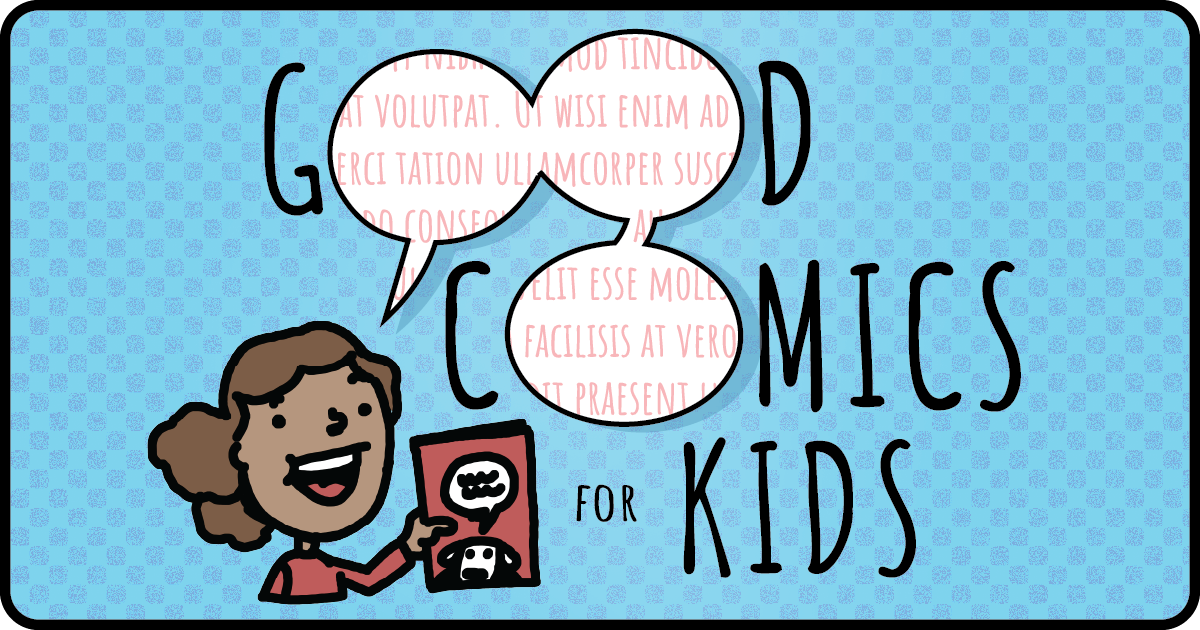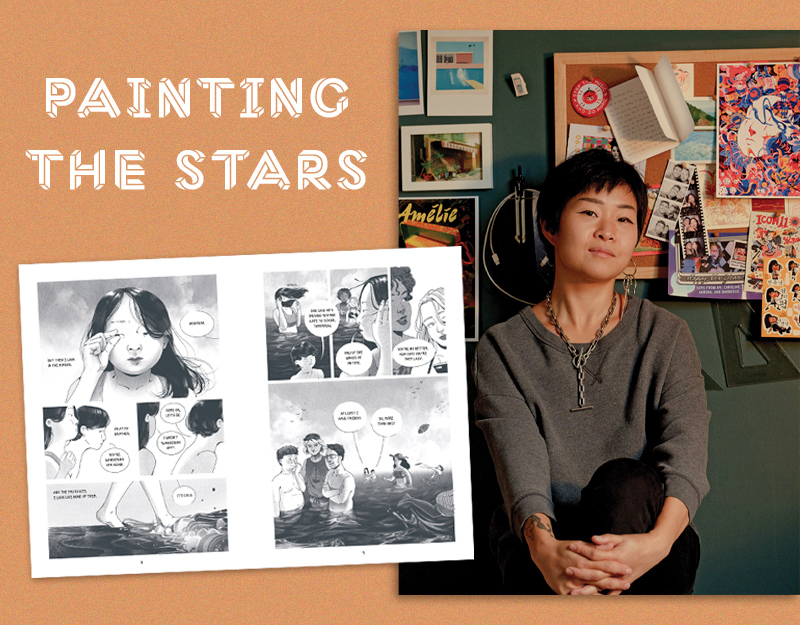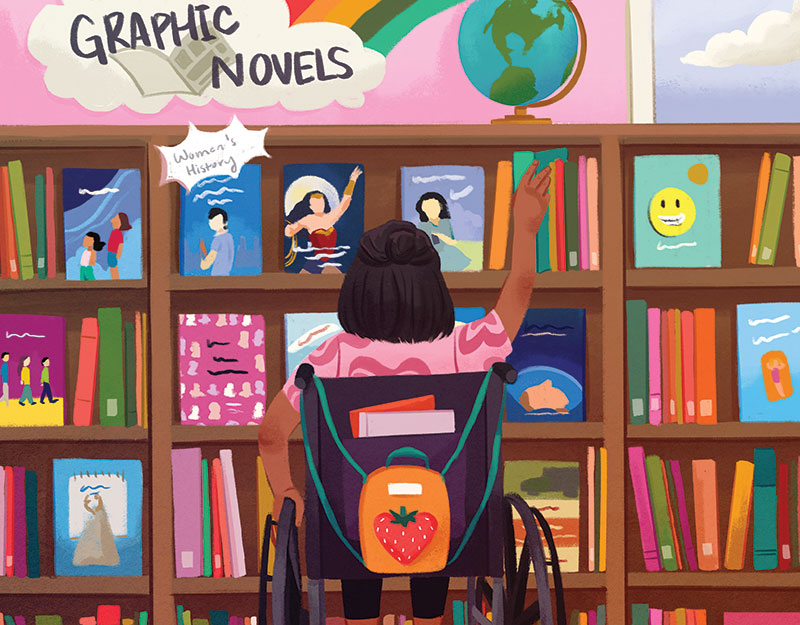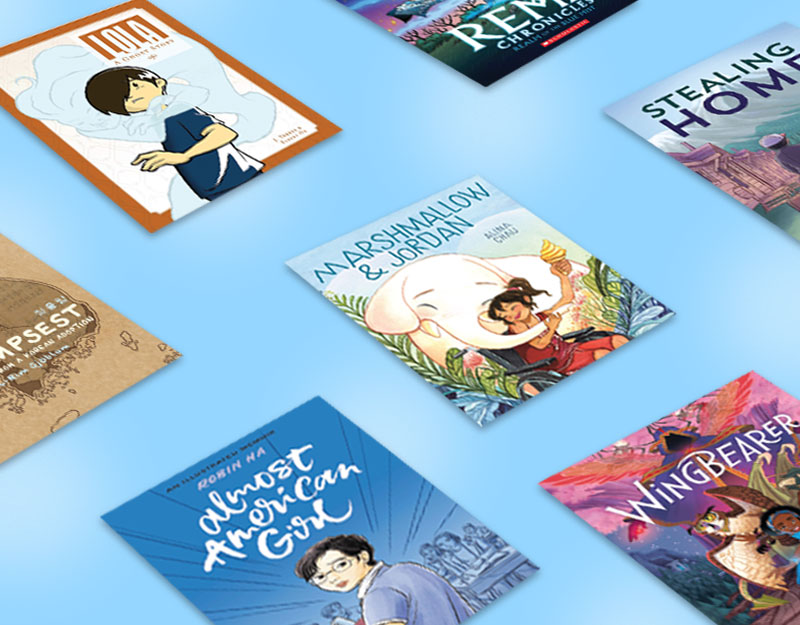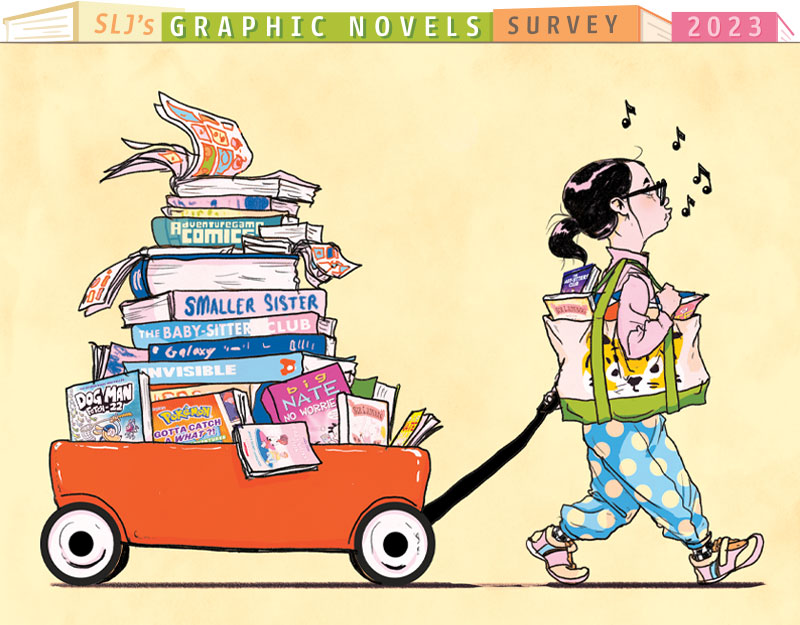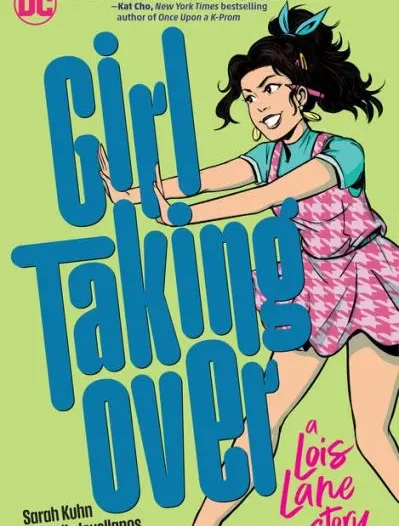
Sarah Kuhn and Arielle Jovellanos on Girl Taking Over: A Lois Lane Story | Interview
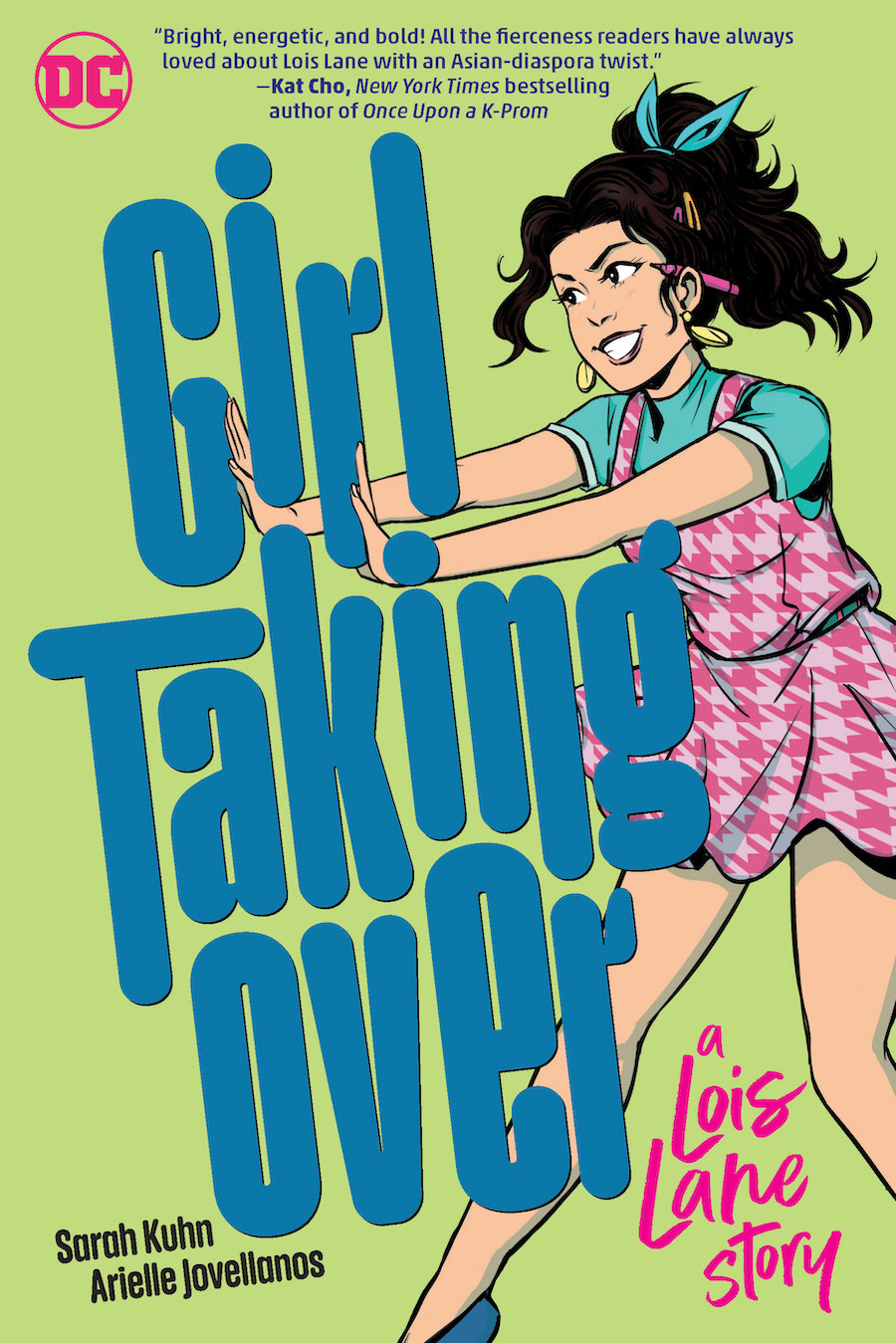
In Sarah Kuhn and Arielle Jovellanos’ Girl Taking Over: A Lois Lane Story, the titular heroine isn’t yet a professional journalist with the Daily Planet, she’s not yet a resident of Metropolis, and she’s never met Superman—or Clark Kent.
It’s the summer between high school and college, and Lois is in National City for a life-changing internship at CatCo, working with her dream mentor Cat Grant. Things don’t go according to her meticulously planned life-plan, however, starting with the fact that she’s got an unexpected roommate in the form of her former best friend-turned-frenemy Miki, and that Cat has just been forced out of CatCo by a new boss.
ADVERTISEMENT
ADVERTISEMENT
With curveballs like these, is Lois’ summer over before it even begins, or will she fight to make the most of it? If you know any version of Lois Lane, then you probably know the answer to that question already. We spoke to Kuhn and Jovellanos about their version of Lois, what she shares in common with past Loises and how she’s distinct.
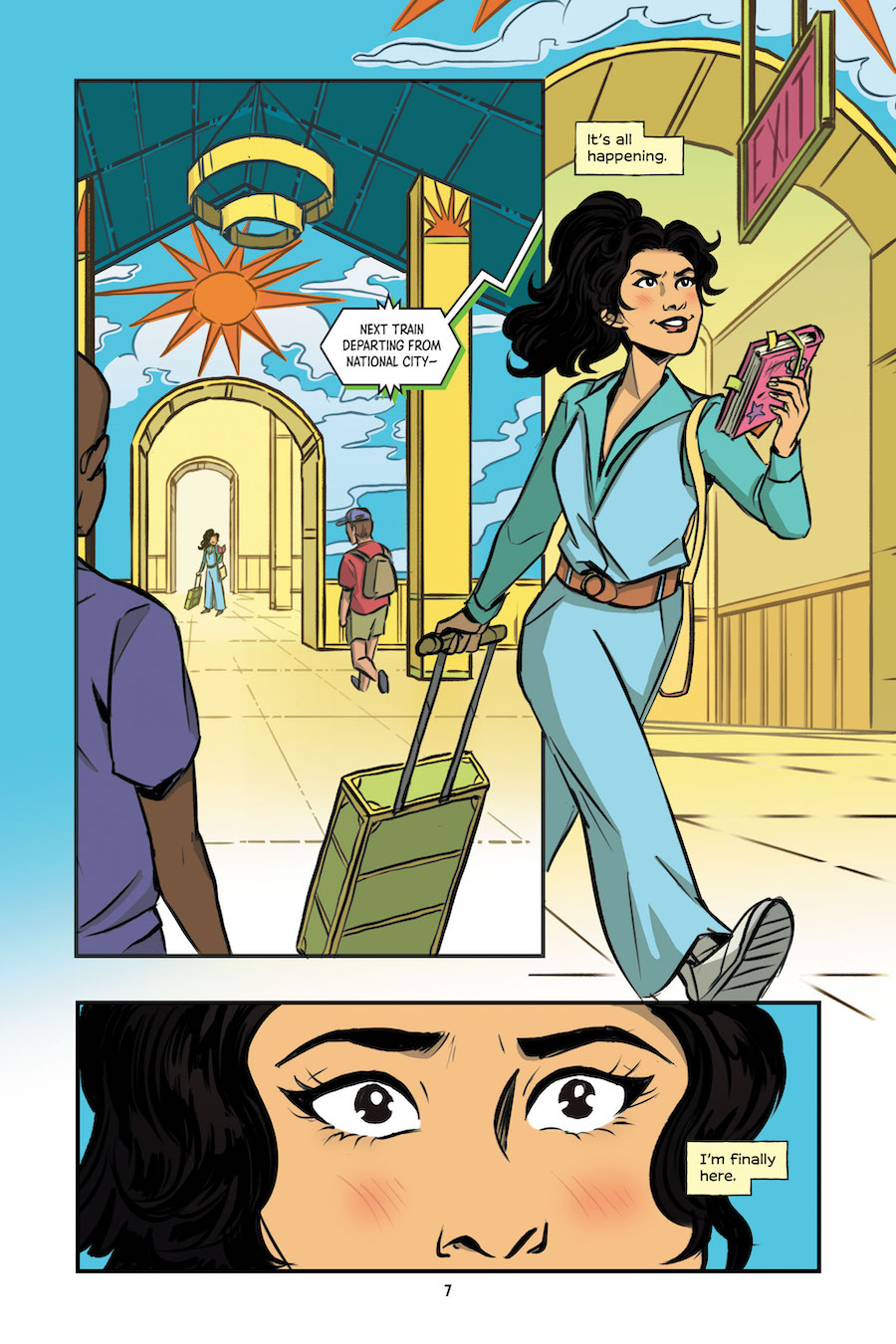
What is appealing to you about the character of Lois Lane, and what made you interested
in devoting so much time and creative energy into telling a new story about her? Sarah, did it appeal to you that she’s also a writer?
Kuhn: Lois Lane is one of my all-time favorite characters. I first became obsessed with her
thanks to the Christopher Reeve Superman movies and have followed nearly every incarnation of her throughout different mediums ever since. I’ve always loved how stubborn and fearless she is, how she seeks the truth at all costs, and how she’s basically willing to fight to the death for what she believes in.
Getting to write my own version of one of my personal icons was such a dream come true. I felt like I could instantly see all the potential and possibility in telling the story of Lois as a teenager finding her voice, falling in love with journalism, and becoming that tenacious fighter we all love so much. She’s one of those characters who feels instantly alive in every incarnation. I adore how unapologetically she takes up space, how she refuses to be demoted to a mere sidekick.
And yes, I suppose I’ve always loved her devotion to reporting and writing—I have my own aggressively fighty streak and I was a journalist for many years, so I connect with her on a lot of personal levels.
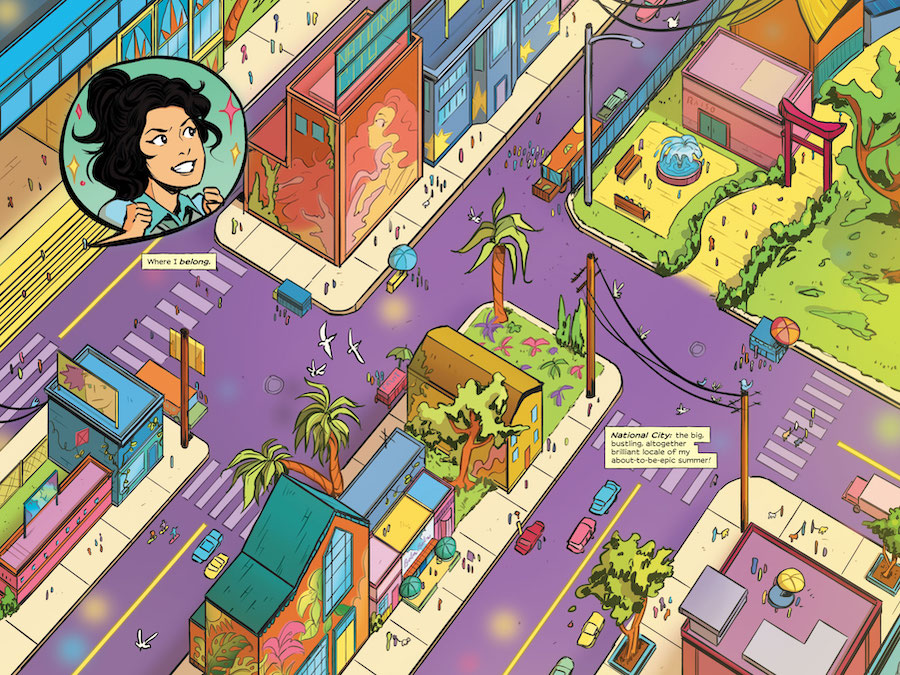
Your Lois Lane in Girl Taking Over is Asian American. Can you tell us why you chose to
retell her story from an Asian American perspective? How did you tap into your own
experiences growing up in the Asian American community to craft Lois’ coming-of-age
story?
Kuhn: Growing up, I was obsessed with comics and superheroes, and sci-fi and fantasy, but I
very rarely saw someone like myself—a biracial Japanese American girl—centered in those
stories. That sent a really strong message—you are not a protagonist, you are not a hero, you
cannot exist in these fantastical worlds you love so much. Or if you do, you will most definitely
be a sidekick or cannon fodder or the saintly-yet-tragic minority character who is there only to
teach white people important lessons about racism.
I suppose I was always searching for tiny scraps of representation and sometimes that meant projecting an identity onto a character—in comics, Lois was generally depicted with black hair, and if I squinted hard enough, she could maybe be an Asian girl like me. I have since learned that a lot of Asian Americans of my generation did the same, so to some of us, Lois Lane has always been Asian!
I think it’s important to reimagine some of these legendary icons in a more inclusive way because every kid deserves to see themselves in that larger than life context. And to me, there was so much of Lois’ story that already mirrored my own—it felt natural.
And it was really wonderful for both Arielle and me to be able to channel some of our own experiences in this book. I certainly tapped a lot into my experiences growing up as one of the few people of color in a very small, very white town. I was always seeking a bigger world, I was always fighting so many battles, and I always wanted to write my own future. All of those things feel very Lois Lane to me.
Jovellanos: Something that helped me get into the vibe for the story was making a playlist to
draw to featuring some amazing Asian diaspora music artists. One of my favorite songs on that playlist is called “A Thousand Cuts” by Ruby Ibarra and Ann One, which was made for a
documentary about Nobel Prize winning Filipina journalist Maria Ressa. Listening to this song
got me in the headspace of Lois Lane and the reasons she must have fallen in love with
journalism.
The Philippines, where my family is from, has a deep legacy of journalists fighting for
the truth. Knowing that, having our version of Cat Grant be a Filipina-American journalist
mentoring Lois Lane felt so significant to me. There are a few visual Easter eggs related to Cat’s heritage that I really enjoyed drawing!
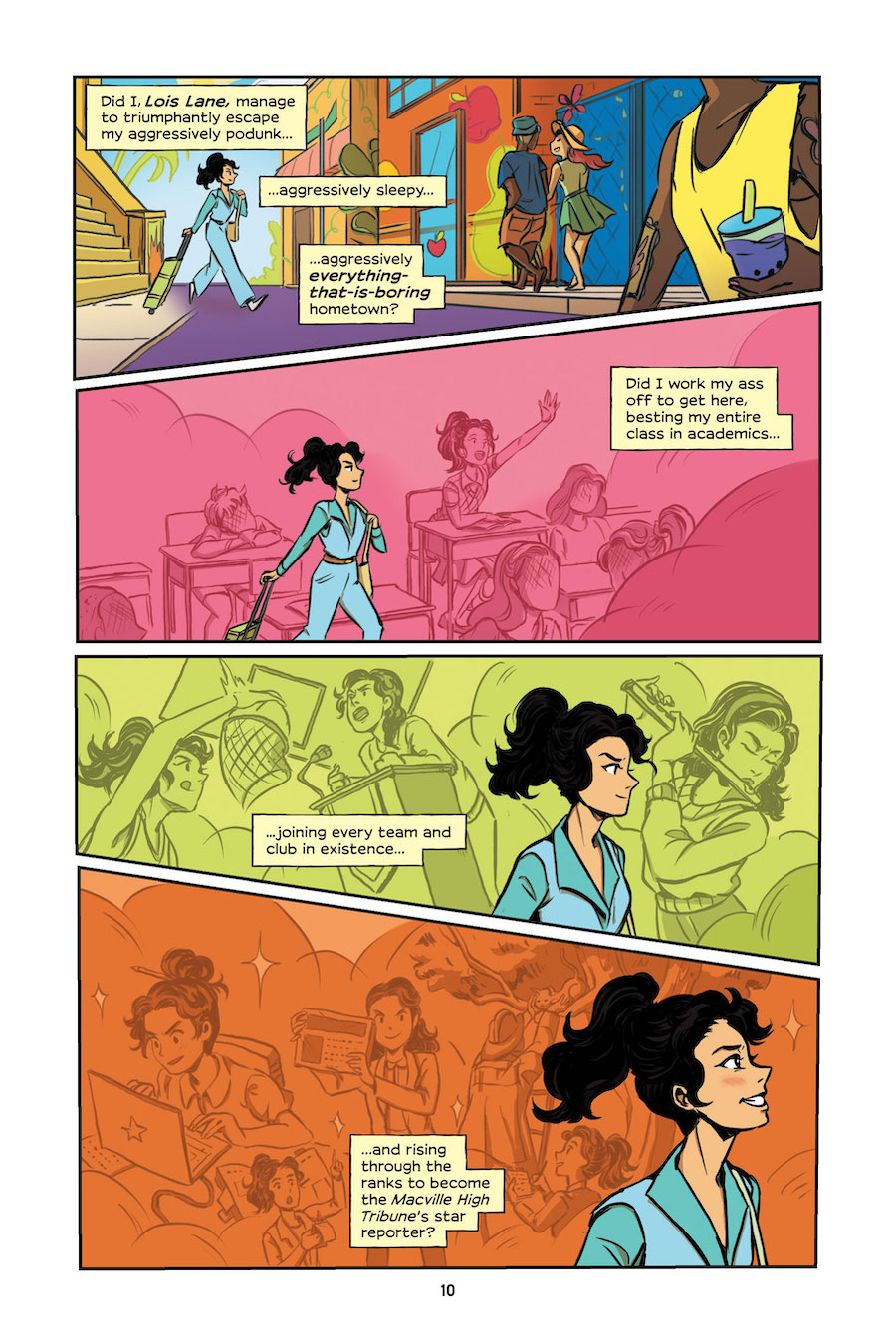
Another key difference between your Lois and some of the Loises that have come before
is the prominent role her mother plays in her life. In fact, as a Superman reader, I can
remember seeing Lois’ dad quite a bit in the comics, but I don’t think I’ve ever even heard
her mom mentioned. What led to having her mom play such a major role, especially since
she’s not even in the same city as Lois throughout the story?
Kuhn: As an Asian American woman, having amazing older Asian lady figures in my life has
always been important. My mom was the person who gave me the strength and tenacity to
survive all those years growing up in my little white hometown—she made sure I knew all about my own identity and our family’s history. And she really made sure that I’d always be proud of my Asianness, that I’d fully embrace and celebrate it. I would not be who I am without her, and I felt like it was so crucial for Lois to have that same experience. Also, there is just something about the connection between an Asian mom and her daughter—I could not imagine telling Lois’ story without that.
Arielle, are there particular artists or particular media versions of Lois you looked to for
inspiration to design and draw your Lois, or did you design her from the ground up?
Jovellanos: So, Lois Lane is a character with 85 years of history and whose multiple depictions have entered universal visual vocabulary. While I didn’t seek out particular influence, I think some things got in there purely from cultural osmosis. Specifically, when I think of Lois Lane, the design that has stuck with me is Brittney Williams’ amazing fanart of her—those expressive eyes and powerful brows! Brittney then went on to do art for a DC middle grade graphic novel starring Lois, called Lois Lane and the Friendship Challenge.
For my version of Lois, I essentially started from the ground up according to Sarah’s wonderfully vibrant descriptions of her, with my own fashion-focused take. I think there’s some modern-does-vintage flair to the wardrobe I gave her which, to me, serves as a visual homage to her history.
I do also want to shout out Lois’ design from My Adventures with Superman, the
upcoming Adult Swim animated television show. While it didn’t directly influence my art, it’s cool to see how these two modern takes on Lois differ but essentially hold a similar Lois Lane
essence to them: she’s energetic, determined, eyes to the sky and full of purpose. That, to me, is the throughline of what makes Lois Lois.
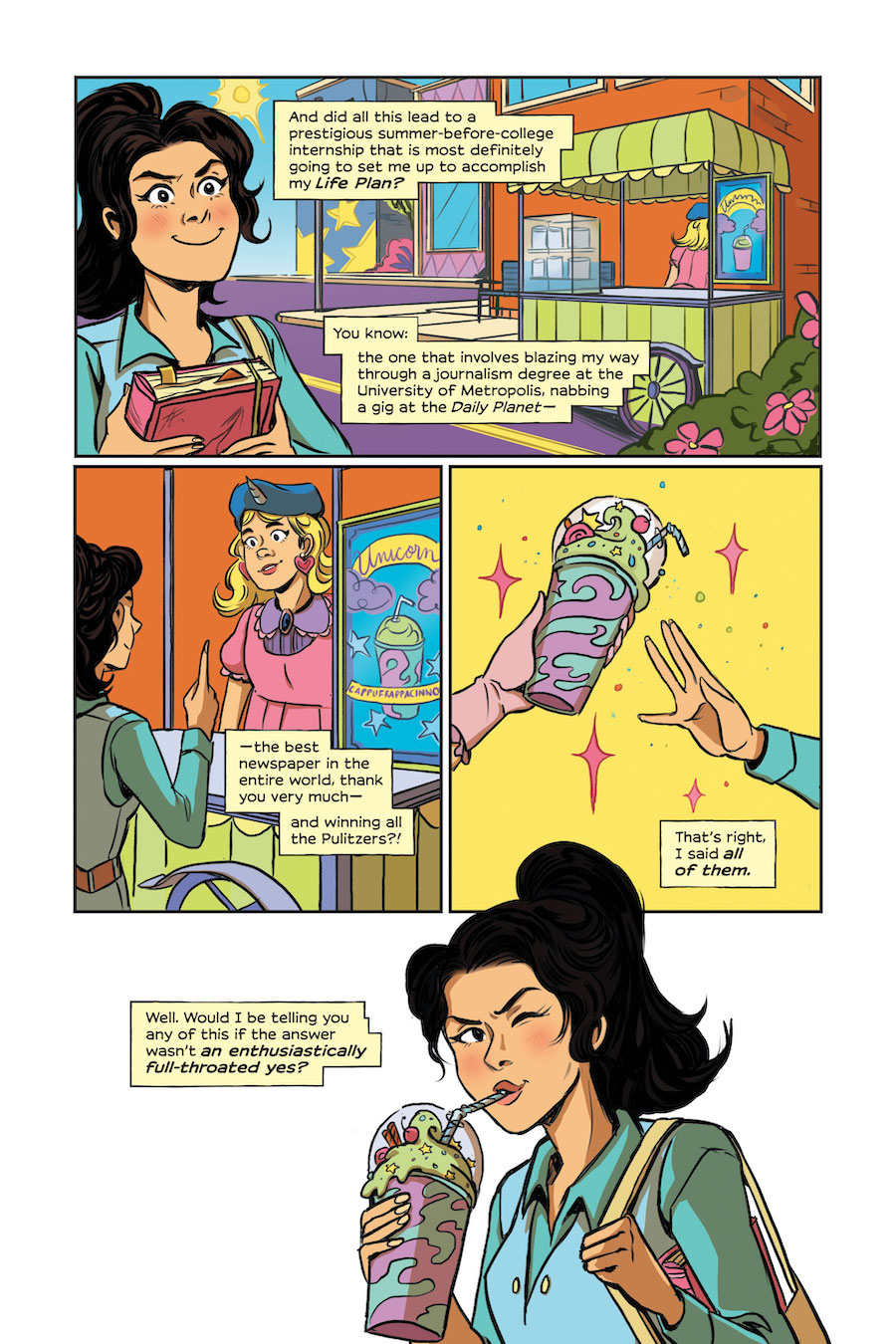
This is a pre-Superman Lois Lane, which is a relatively rare sort of Lois Lane. Was it at all
difficult to disentangle Lois from Superman/Clark Kent and the Metropolis setting? What
did you find advantageous about doing so?
Kuhn: Honestly, no, it wasn’t difficult. I think I’ve always seen Lois as the actual main
character—or at the very least, a co-main character—in most Lois and Superman narratives.
Going back to those old Superman movies—Margot Kidder’s portrayal really jumped off the
screen and I don’t think there’s any reasonable way to see her as a side or supporting
character.
Again, she takes up so much space and is such an undeniable presence. And we,
the human audience, are kind of seeing Superman through her eyes—we are often grounded in her POV. It’s as much her story as it is his.
As a young girl with a fighty streak…I mean, Superman was cool, but Lois was it. She has such a distinct presence and such a powerful drive—there are so many story directions she can go in all by herself. It was a delight to really focus on her journey, on how she finds that signature fight we all know so well and learns to stand up for herself—we got to bring out things that have always fascinated me about Lois, and being able to concentrate on her as the sole main character felt like the biggest gift.
I could probably tell solo Lois Lane stories forever. And I cannot help but feel that almost every version of Lois would be stoked to hear that she is the solo star of this book—it’s what she deserves.

What was it like to craft the original characters in the book? Can you talk a bit about the
creation of Miki, Jasmin, and the others?
Kuhn: It was very, very fun—it’s always fun when you get to add someone totally new to the
canon. For Miki, Lois’ chaotic, artistic, wildly outspoken frenemy, we wanted someone who was kind of the opposite of Lois. Lois has a highly detailed Life Plan—Miki rarely has any kind of plan for the next few seconds of her existence.
And Jasmin is also a kind of opposite—a gentle, bubbly free spirit who finds joy in everything. We wanted them to have their own distinct voices and lives so that Lois could have her very own modern squad, a group who really lifts each other up and supports each other throughout the triumphs and failures of young adulthood.
Also, since I was already very familiar with Arielle’s incredible art and design sense, I think I was trying to dream up characters who I knew she would be excited to create—and who she would make as cute as possible.
Jovellanos: For Miki, Jasmin, and also Lois, I feel like I was inspired by people I have met and
interacted with like them in real life, especially in creative community settings like art school,
theater and comic or anime conventions. Because of that, it wasn’t difficult for me to tap into
their personalities, likes, dislikes and ambitions and have that reflected in their facial
expressions and body language.
Fashion is also a huge part of how I design characters. What a character decides to wear acts
as a shorthand to understanding a character’s personality and how they contrast to the
characters around them. With the help of two amazing fashion assistants, Elinda and Jaemari, I had a lot of fun figuring out how to style everyone in the cast. I don’t want to play favorites, but I think Jasmin’s wardrobe was the most enjoyable to coordinate, and maybe the one I would wear out of all of them.
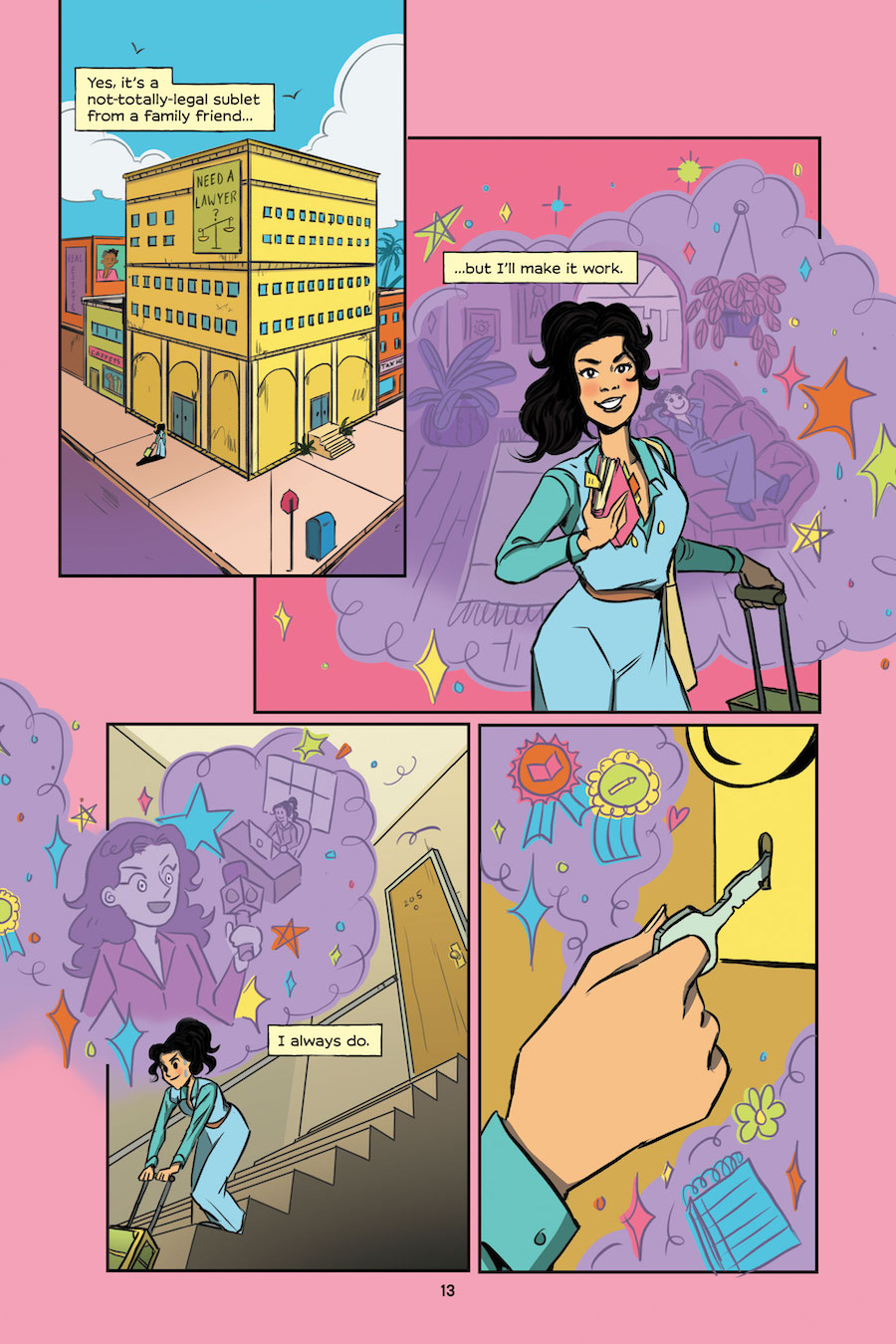
Can you tell us a little about National City and how the city became like a character in the
book? Did you draw inspiration from any particular real cities or places in writing about it
and designing it?
Kuhn: I think we always saw National City as DC’s version of Los Angeles. I’ve lived here in
Los Angeles now longer than I’ve lived anywhere, and I have never been so in love with a place. I love LA’s vibrance, its diversity, and its creative spirit. And I especially love LA in the summer, when everything’s blooming and everyone’s out and you can spend an entire Saturday doing, like, an ice cream tour of the city.
I wanted our National City to feel like that—like you are just around the corner from an incredible possibility at any given moment, that your life is really starting and unspooling in front of you like the most colorful, bustling LA street. Because for Lois, that’s what’s happening—she’s at that exact moment in her life when anything is possible and her whole future is in front of her.
Arielle and Olivia Pecini, our colorist, created a National City that truly feels like its own big, beautiful world, and I just fall right into the pages depicting that every time.
Jovellanos: A piece of art advice that has stuck with me is: “Everything is a character.” And once you see everything through that frame, it makes drawing anything so much more fun—there’s a lot of narrative potential in backgrounds and settings and I always try to take advantage of that real estate when I can.
Sarah was a great collaborator because she has a unique way of writing comic scripts so her language really evokes the feeling she wants me to capture. They’re lush with detail while also giving me a lot of room to play—very easy to see in my mind’s eye and then adapt visually. Her descriptions for National City were no exception. Of course, I also have to mention our amazing colorist, Olivia Pecini, because she brought an even deeper sense of vibrance and life to my lines with her eye-popping palette!
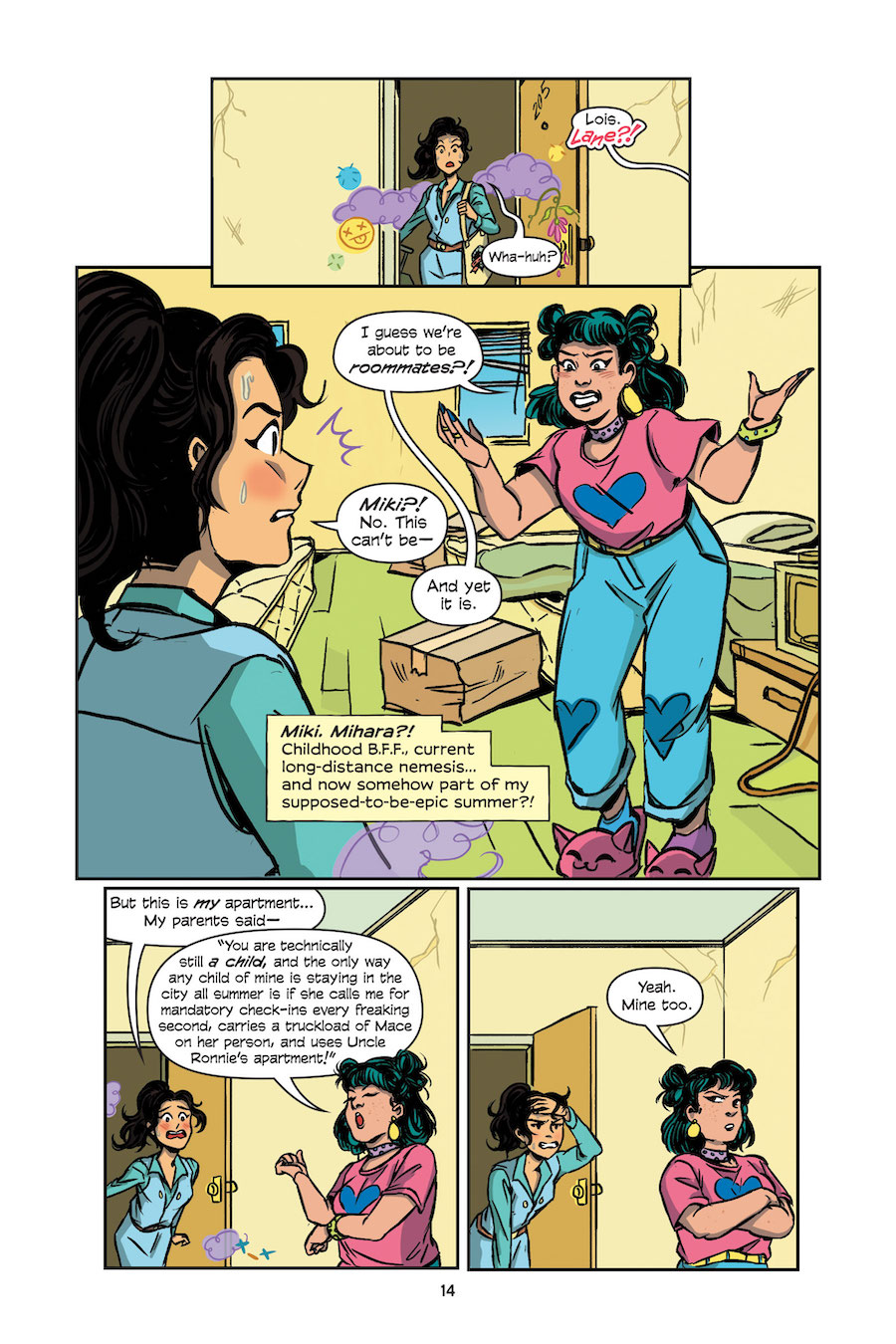
While there’s no Clark Kent, there is Noah, a cute boy with glasses and an almost S-curl-
like bang situation. What makes Noah similar to and different from Clark?
Kuhn: I don’t think this was exactly intentional, but I suppose you can say that Lois definitely
has a type! Noah does give off some of those classic shy, awkward Clark Kent vibes. To be
honest, though, I didn’t really think about Clark when writing Noah—because again, this was all Lois’ story and Clark/Superman is not part of her story yet.
I did think about what might attract Lois to someone at this stage in her young life, and I guess the answer to that is a person who makes obsessively detailed spreadsheets and databases. Lois and Noah both have a thing for piles of well-organized information—like, they would probably do their heaviest flirting through an Excel doc.
Jovellanos: I agree with Sarah that his look wound up being a coincidence, but I also like the
idea that in some far future Clark can tease Lois about his own visual similarity to her first
boyfriend!
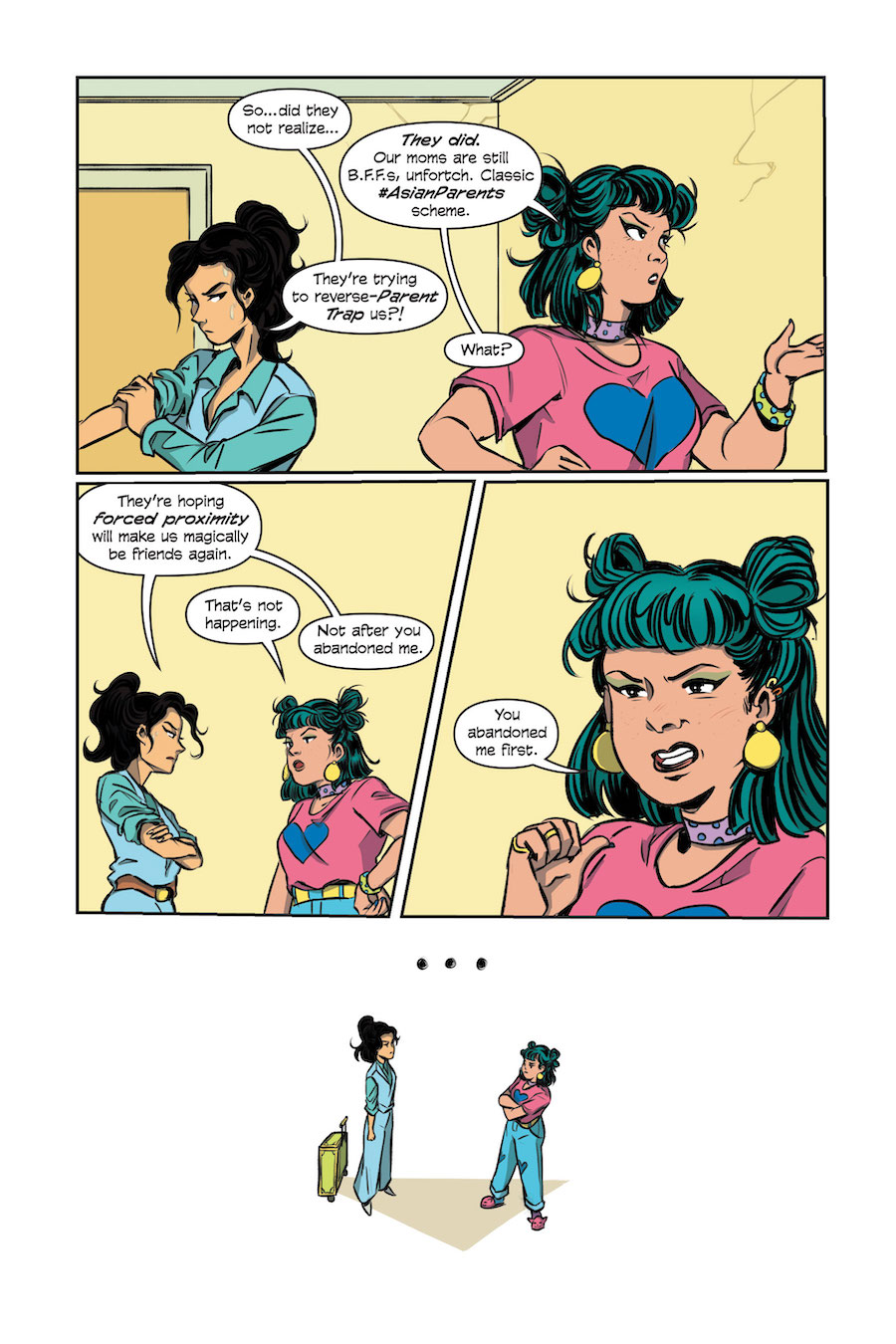
Do you have any plans for continuing Lois’ story in future books?
Kuhn: No solid plans yet, but I’m sure we would all love to! We all fell so hard for this version
of Lois and her friends and her city. This comic was an absolute dream team collaboration from start to finish—Arielle has always been someone I had a little artist crush on, someone I was absolutely dying to collaborate with.
And we were so lucky to work with Olivia, who made the book so colorful and alive, and with letterer Melanie Ujimori, who made such bold, kinetic choices that you can literally hear the dialogue. And with editor Sara Miller, who was one hundred percent our Cat Grant, Lois’ intrepid mentor in Girl Taking Over. I really cannot thank Sara enough for how much of a warrior she was in shepherding this book to its beautiful conclusion. It would feel like a true gift to tell more of Lois’ story with this unbelievable team.
Jovellanos: I would really be into exploring Lois’ life a few years down the line, following the
stories she breaks, and the truths she fights for, with or without Clark. I’ll second Sarah and say that the whole team on this—Sara, Sarah, Olivia, and Melanie—came together to make an
incredibly fun and moving story, and it would be amazing to do another!
That said, I’ll be honest and say I’d love to draw a rendition of sweet, farm boy Clark holding
Lois’ purse and coffee, as she barrels through the hallways of The Daily Planet, notebook in
hand, with a mission in her heart. Or maybe of Clark meeting our version of Lois’ mom as she
aggressively sits him down to eat a home-cooked Japanese meal and then sends him home
with 20 Tupperwares.
Filed under: Interviews
About J. Caleb Mozzocco
J. Caleb Mozzocco is a way-too-busy freelance writer who has written about comics for online and print venues for a rather long time now. He currently contributes to Comic Book Resources' Robot 6 blog and ComicsAlliance, and maintains his own daily-ish blog at EveryDayIsLikeWednesday.blogspot.com. He lives in northeast Ohio, where he works as a circulation clerk at a public library by day.
ADVERTISEMENT
ADVERTISEMENT
SLJ Blog Network
Endangered Series #30: Nancy Drew
Research and Wishes: A Q&A with Nedda Lewers About Daughters of the Lamp
Navigating the High School and Academic Library Policy Landscape Around Dual Enrollment Students
Take Five: New Middle Grade Books in May
ADVERTISEMENT

